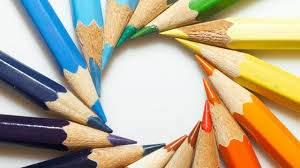Coloring is an activity that we tend to associate with children. As we grow older, we put aside our crayons and colored pencils in favor of more respectable writing utensils like pens and highlighters. However, it turns out coloring can be beneficial for adults — namely for its de-stressing power.

The practice generates wellness, quietness and also stimulates brain areas related to motor skills, the senses and creativity. In fact, publishers have lately been launching coloring books specifically for adults. The trend is alive and well in countries in Europe and North America. Most recently, in Spain, the publication Espasa published Coloréitor, with illustrations by well-known cartoonist Forges.
One of the first psychologists to apply coloring as a relaxation technique was Carl G. Jüng in the early 20th century. He did this through mandalas: circular designs with concentric shapes similar to the Gothic churches’ rose windows. They have their origin in India.
When coloring, we activate different areas of our two cerebral hemispheres, says psychologist Gloria Martínez Ayala. “The action involves both logic, by which we color forms, and creativity, when mixing and matching colors. This incorporates the areas of the cerebral cortex involved in vision and fine motor skills [coordination necessary to make small, precise movements]. The relaxation that it provides lowers the activity of the amygdala, a basic part of our brain involved in controlling emotion that is affected by stress.”
In simplest terms, coloring has a de-stressing effect because when we focus on a particular activity, we focus on it and not on our worries. But it also “brings out our imagination and takes us back to our childhood, a period in which we most certainly had a lot less stress.” This leads us immediately and unconsciously to welfare, exposes the specialist.
“I recommend it as a relaxation technique,” says psychologist Antoni Martínez. “We can use it to enter into a more creative, freer state,” he assures. We can also use it to connect with how we feel, since depending on our mood we choose different colors or intensity. “I myself have practiced that. I recommend it in a quiet environment, even with chill music. Let the color and the lines flow.”

http://www.huffingtonpost.com/2014/10/13/coloring-for-stress_n_5975832.html
http://www.nytimes.com/2015/03/30/business/media/grown-ups-get-out-their-crayons.html?_r=0